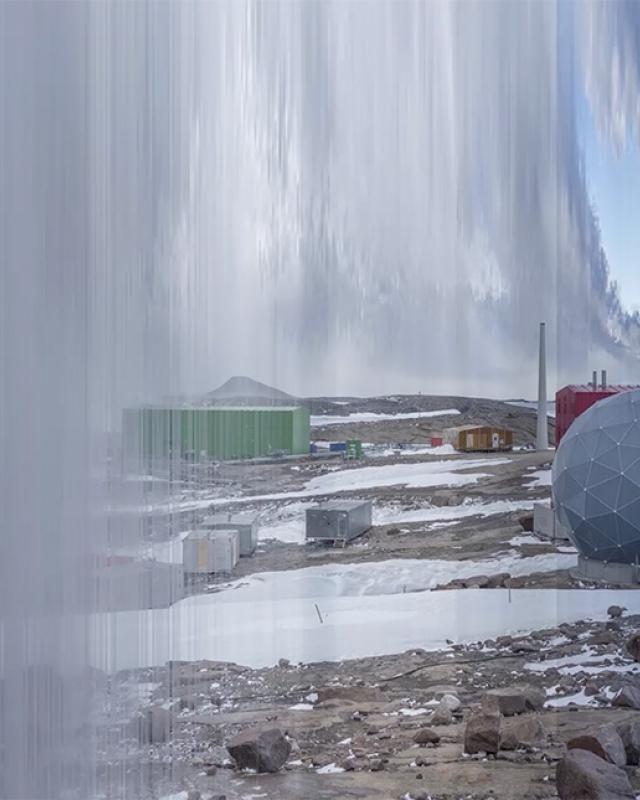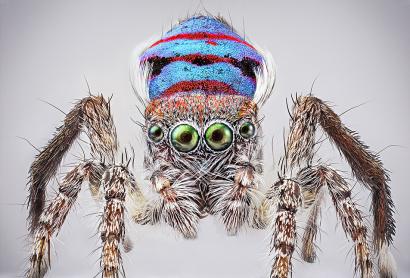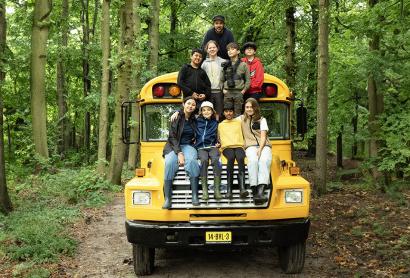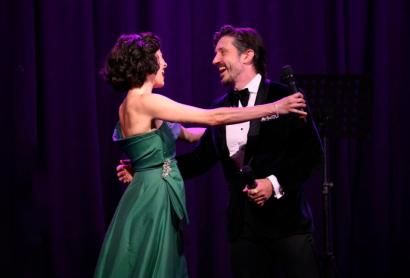The 2025 ART AFTER DARK program flows through Winter on the Bunjil Place Outdoor Screen with a beautiful mesmerising work from the depths of Antarctica by Philip Samartzis, Martin Walch and Dr Sean Williams.
Bunjil Place Outdoor Screen
1 – 30 June
5.00 pm - 7.00 pm (daily)
The Magnetic Quiet Zone
Samartzis/Walch/Williams
Single Channel High Definition Digital Video with Stereo Sound, 2024
The Magnetic Quiet Zone is an immersive, 35-minute audio-visual installation that explores the frozen sounds and stagnant silences, the strange atmospherics, and the dynamic forces shaping the margins of our planet. Through the lens of the Antarctic landscape, it brings into focus the uncanniness of a place where time and space fold into a perpetual present.
Drawing from the pioneering research of sound artist Philip Samartzis, visual artist Martin Walch, and writer/composer Sean Williams, The Magnetic Quiet Zone combines field recordings, digital imaging and animation, and ambient soundscapes to evoke the vast, ever-shifting environment of Antarctica. These elements render the complex behaviours, material encounters, and wild weather of the ice continent, offering an experience of both isolation and connection.
The animated video, captured at 150-second intervals during the 2017/18 austral summer, forms a visual record of light and shadow, mutable weather patterns, and the rhythms of human activity that disrupt the fabric of space and time. This visual meditation culminates in the sensation of an endless day—an experience of light without end.
The Magnetic Quiet Zone is produced with the support of the Australian Antarctic Arts Fellowship program, which hosted Philip Samartzis in 2010 and 2016, Martin Walch in 2017/2018, and Sean Williams in 2017. It is created within the framework of the ARC-funded Discovery Project, Creative Antarctica: Australian Artists and Writers in the Far South.
Philip Samartzis
Philip Samartzis is a sound artist working at the intersection of environment, technology, and place. His work explores the effects of climate and industrial transformation in remote and concealed locations, integrating sound, photography, and field-based practices to evoke altered ecologies and hidden infrastructures. He is the recipient of three Australian Antarctic Territory Fellowships which he is using to create a sound map of Eastern Antarctica. His multisensory project Polar Force, with Speak Percussion, earned an Honorary Mention at the 2019 Prix Ars Electronica. In 2021, he was featured on the $2.20 Australia Post stamp for his contribution to Antarctic arts.
Martin Walch
Martin Walch is a Hobart-based artist working across photography, video, sound, and data visualisation. He coordinates the Photography program at the University of Tasmania’s School of Creative Arts and Media. Walch’s work explores remote, industrial, and ecological environments, and has been exhibited nationally and internationally, including at ARCO Madrid, the MCA Taipei, and the Adelaide Biennial. He has received numerous awards, including the Hobart City Art Prize and the Australian Antarctic Arts Fellowship. Walch’s work is held in major collections including the Tasmanian Museum and Art Gallery, ACMI, the Art Gallery of South Australia, and the National Portrait Gallery.
Dr Sean Williams
Dr Sean Williams is Discipline Lead of Creative Writing at Flinders University and Research Lead of the Cube ambisonic studio for Assemblage Centre for Creative Practice Research. A #1 New York Times-bestselling author and composer of ambient and experimental music, he has collaborated with Garth Nix and Steve Roach, written for Star Wars and Doctor Who, and made music for the stage and screen. He visited Casey Station on the Australian Antarctic Arts Fellowship in 2017.






